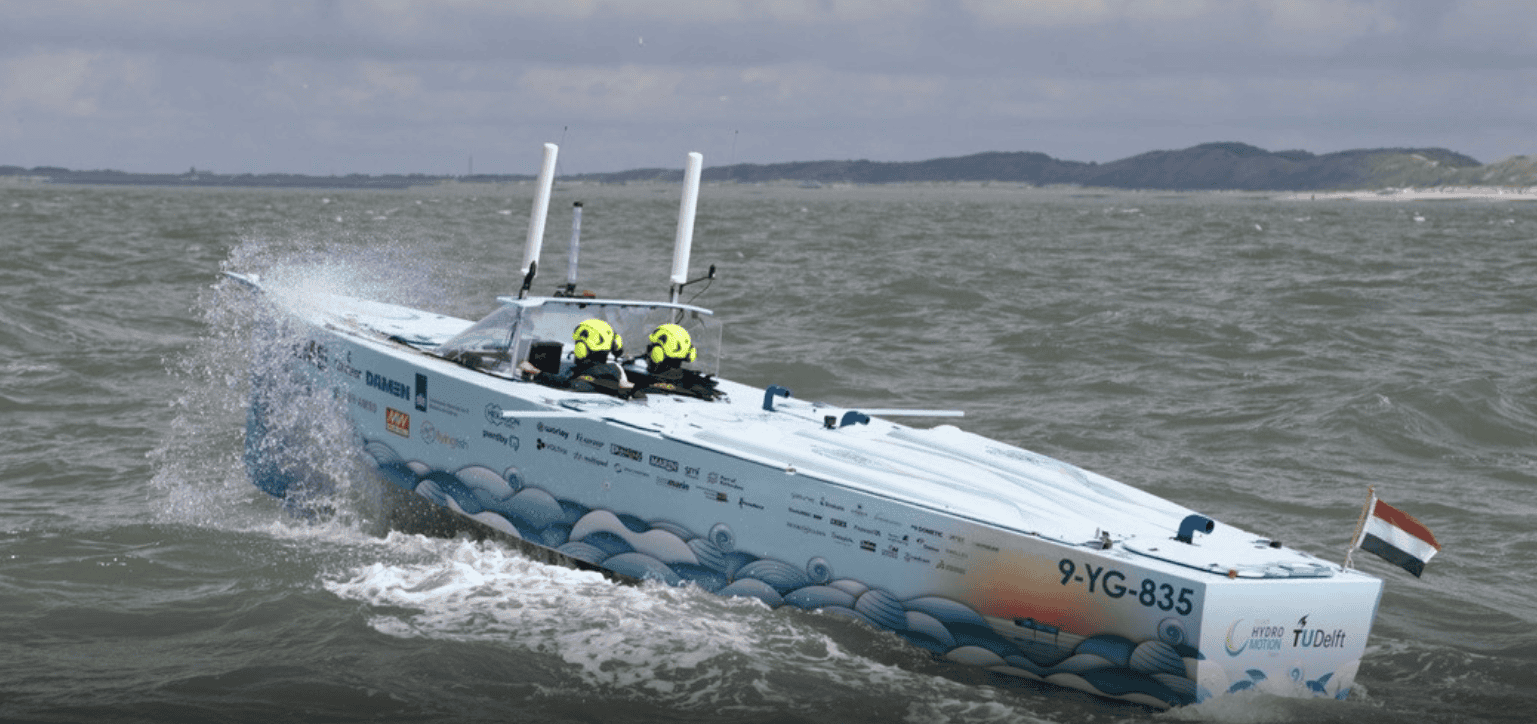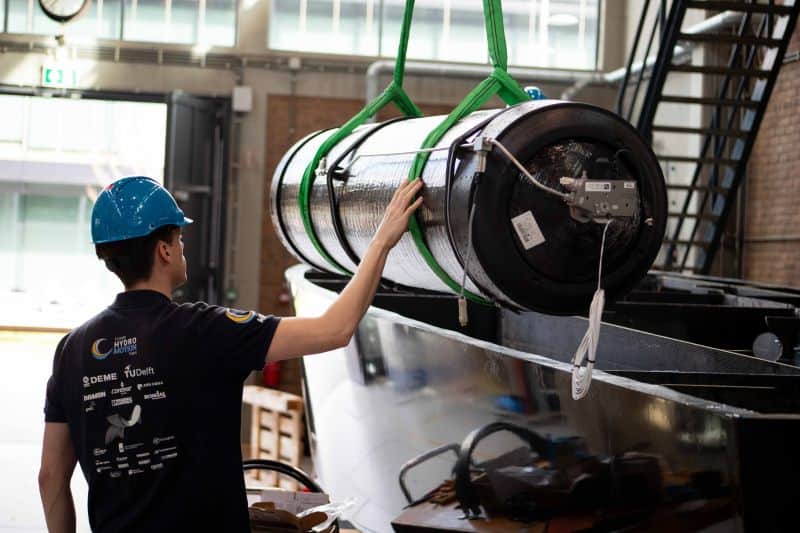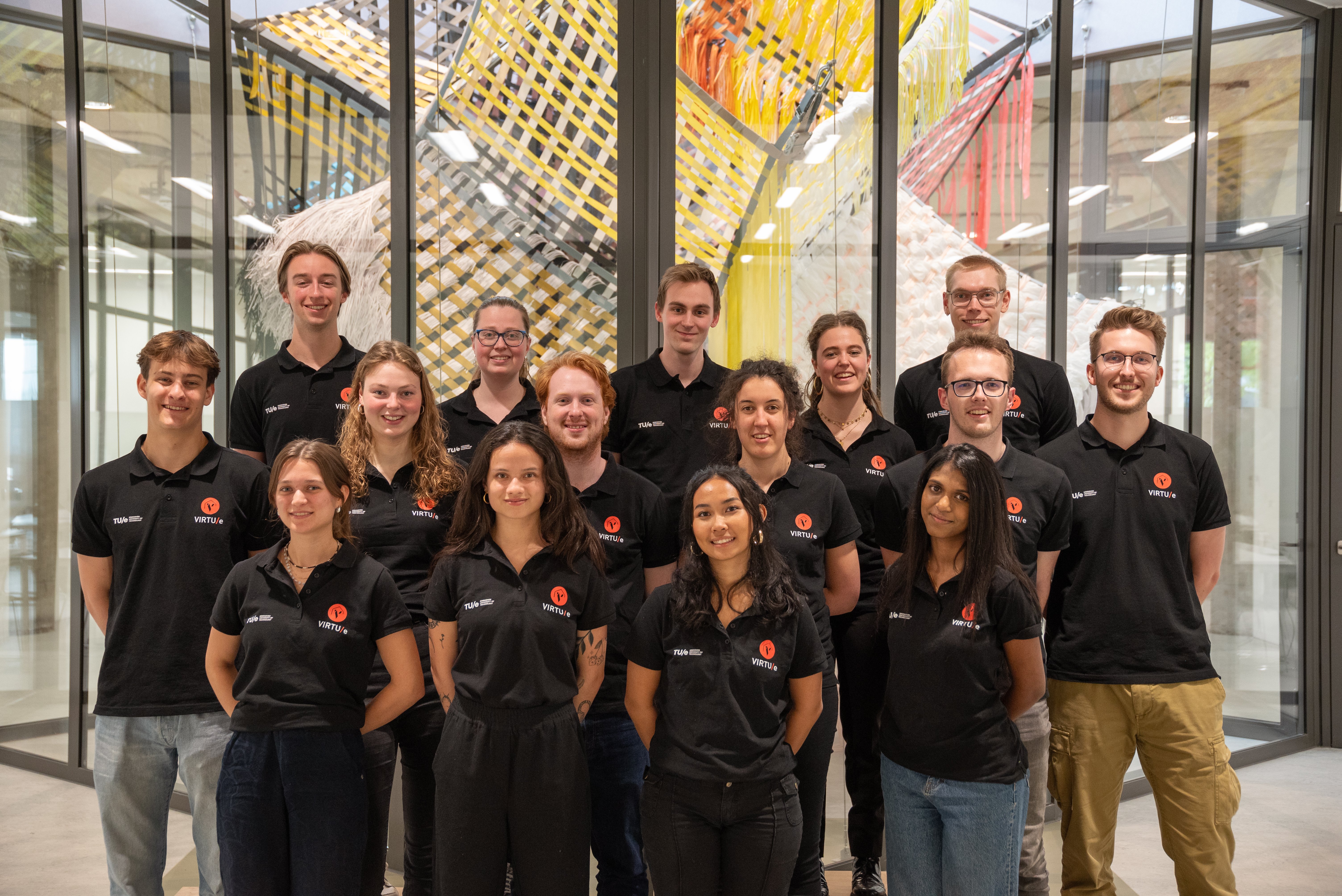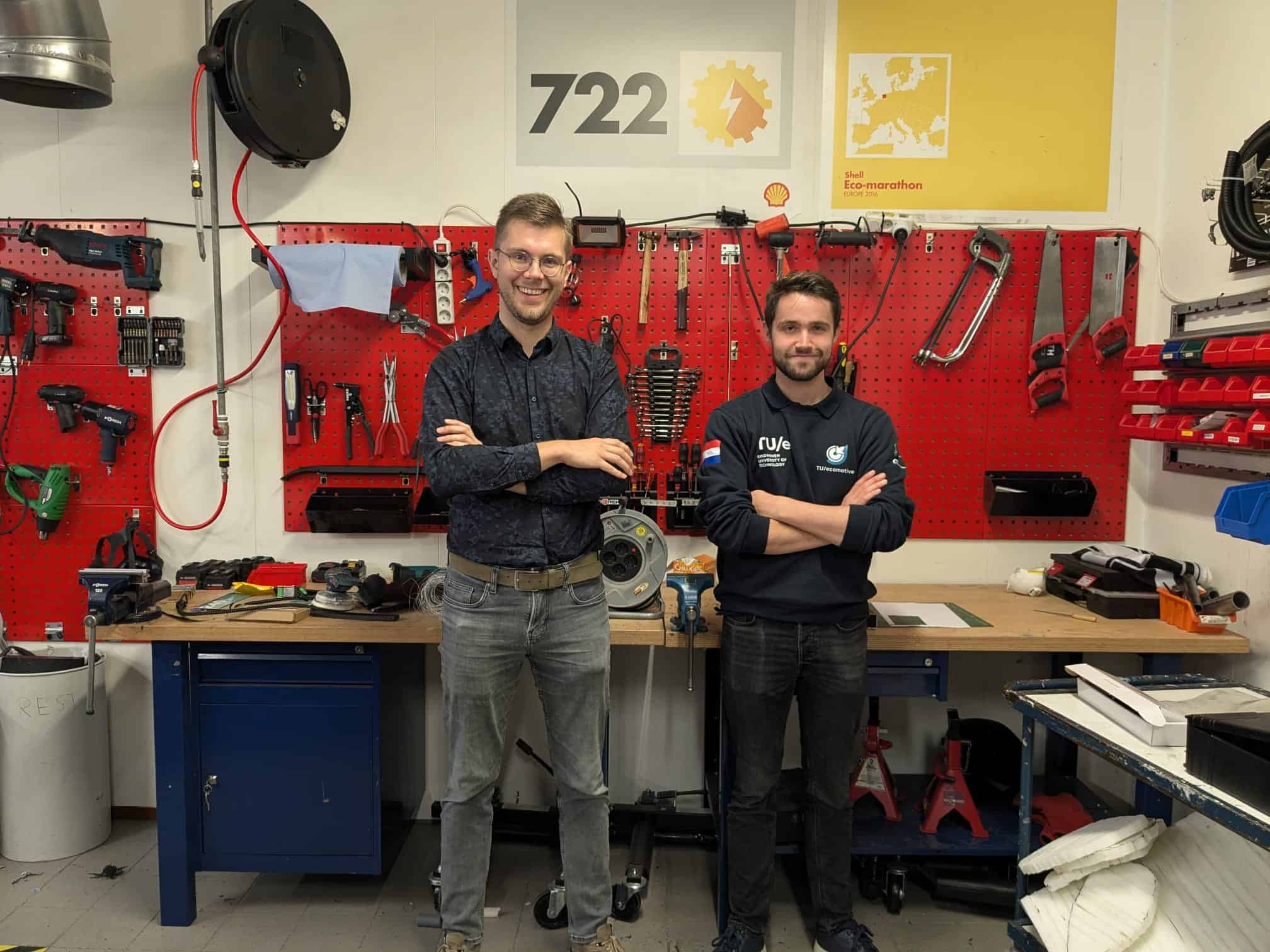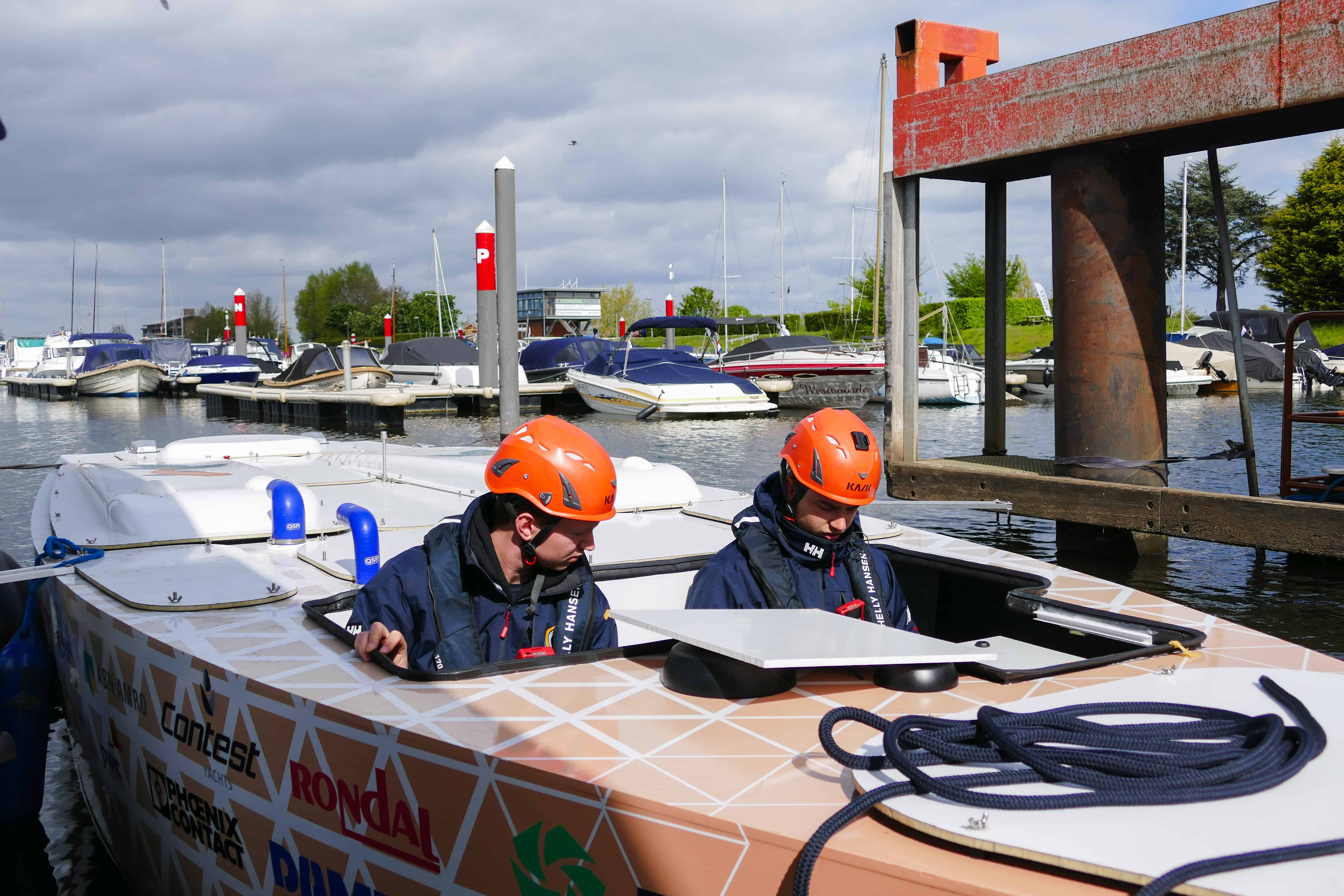
A flying boat powered by hydrogen sounds exciting, and it is. Hydro Motion, a TU Delft student team, unveiled its brand-new craft this month. The students chose a flying one. Not only is this very impressive, but it is also very efficient. At a speed of more than 25 kilometers per hour, the boat partially emerges from the water. “The resistance in the air is much lower than the resistance in the water. Therefore, a flying boat sails more efficiently than a model lying in the water,” explains Isabelle de Bruin, team leader of the TU Delft Hydro Motion Team.
Insightful innovators
This story is part of the “Insightful Innovators” series, an initiative of the 4TU.Federation and Innovation Origins. Here you can read the stories of enterprising students at four Dutch technical universities and their ambition to make the world a little nicer. They are a driving force behind innovation in the Netherlands.
Read the orther stories in this series here.
Efficiency is key
Efficiency is very important because hydrogen as a fuel for boats is still in its infancy. The students’ boat runs on green hydrogen. That means it is produced with sustainable electricity from, for example, wind or sun. The hydrogen gas is contained (under high pressure) in a tank on board the boat. The hydrogen is converted there into electricity to drive the engine. The boat emits only water during a cruise. If hydrogen is not made with renewable but with fossil energy, there are still (indirectly) greenhouse gas emissions.
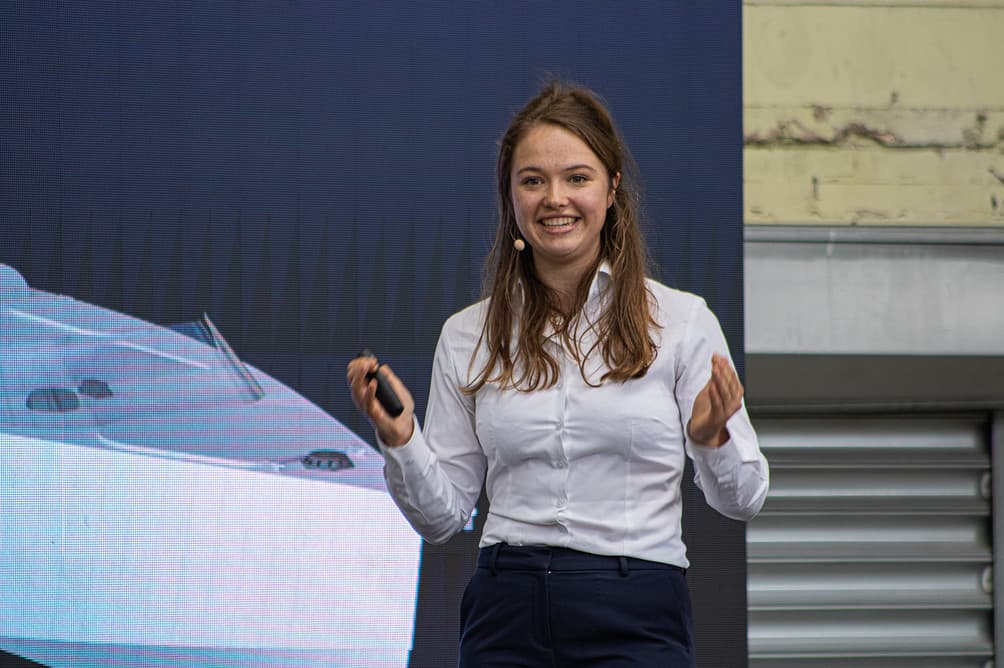
Hydrogen indispensable in the energy transition
The students think hydrogen will be an important element in making the maritime industry more sustainable. “Especially for long distances, a hydrogen boat is much more suitable than a battery-powered one,” De Bruijn argues. This is because the energy density of hydrogen is higher than that of batteries. “For a boat like the one we have made now, it saves half the weight.” Batteries are considerably heavier than a hydrogen tank, but a hydrogen tank, in turn, is often larger than batteries. “It’s important to get the pros and cons right. The best choice for sustainable fuel also depends on the vessel, distance, time, and other factors.”
According to team manager De Bruijn, a lot of development is still needed for boats to run on hydrogen on a large scale. This involves, for example, optimizing the tanks on board a boat but also the infrastructure around hydrogen. “For cars, it is already possible to refuel hydrogen in some places. For boats, it’s still a lot more complicated.”
Wake up industry
TU Delft Hydro Motion Team’s main goal is to keep pushing the boundaries of sustainable technology. The student team is already making a hydrogen-powered boat for the third year in a row. The team’s composition changes every year, and each team makes an entirely new boat. This year the team consists of 23 students from nine different studies within TU Delft.
In the summer, the team will participate in the Monaco Energy Boat Challenge in the Open Sea Class, where renewable fuel boats race against each other. “We want to become champions, of course,” laughs De Bruijn. But it’s not just about the win. “In the end, we think technical progress is the most important thing. We want to keep pushing boundaries. That way, we can eventually show the maritime industry what is possible.”



